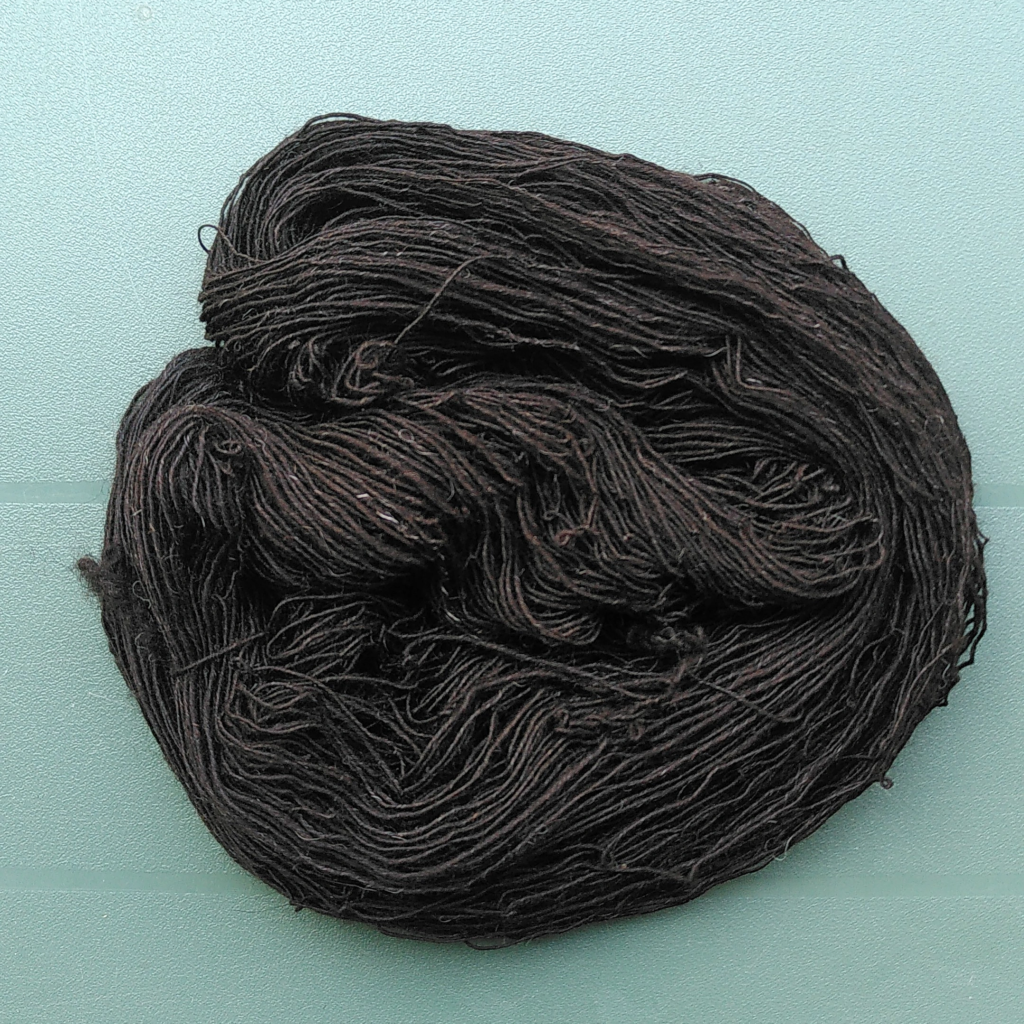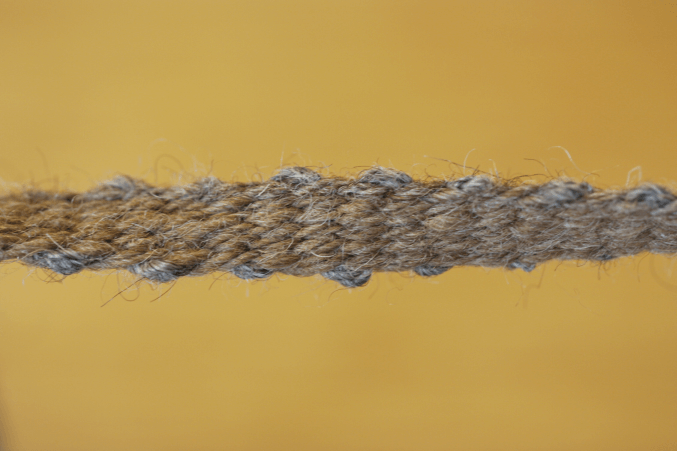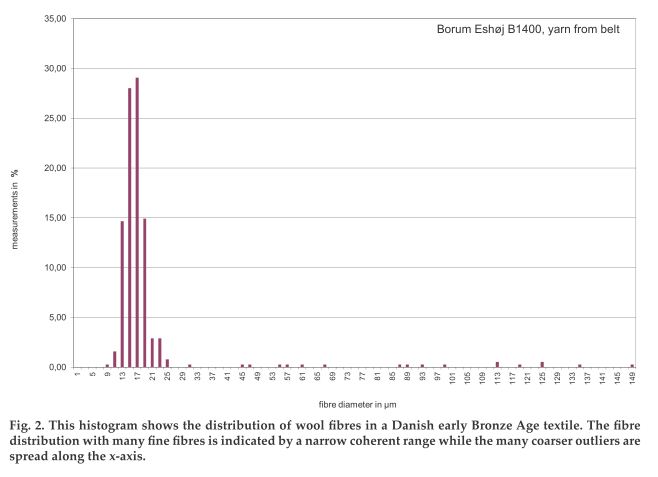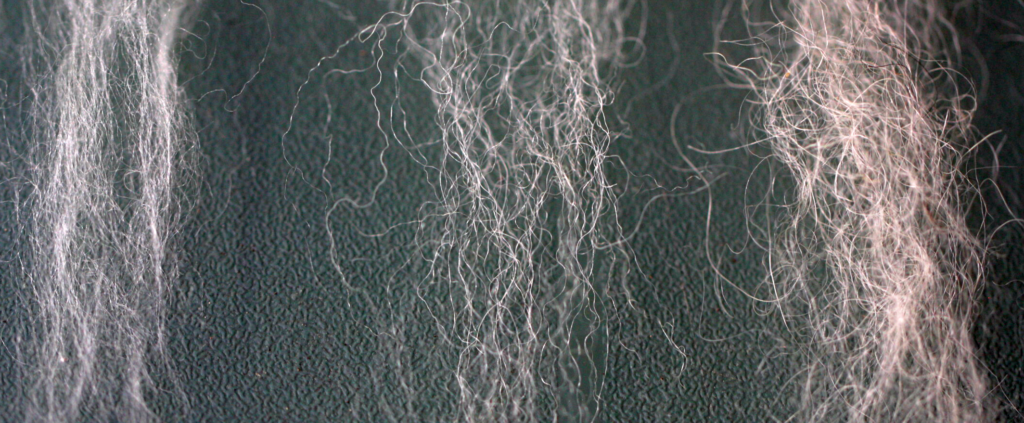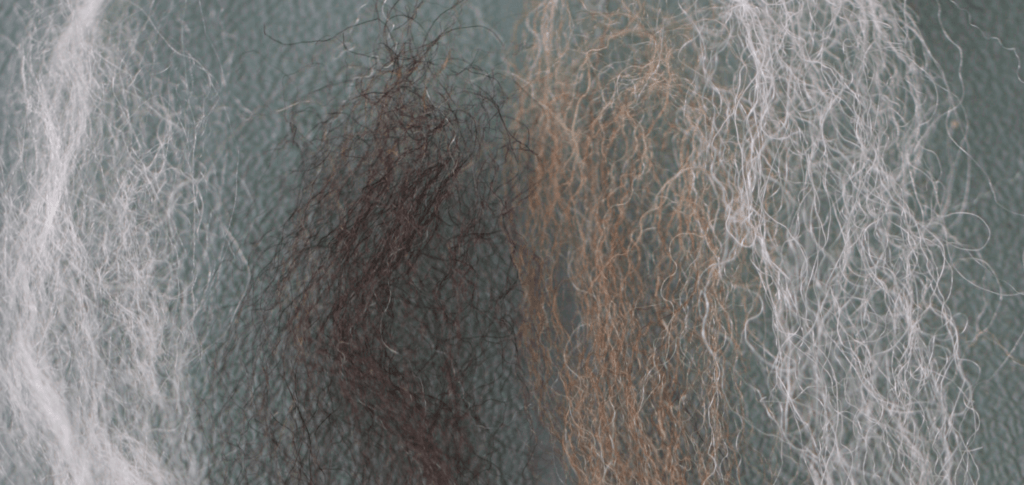(continued from part 4)
The special thing about the pharaoh band is that there's extra heddles and extra warps that, when lifted alternatingly with the regular warps, form a pattern in the middle of the band. It's fascinating, and beautiful, and surprisingly difficult to get everything sorted out and aligned and moving like it should and behaving. You need to have the heddles straight so they can glide down or let the other threads glide up, but they can't be really pulled because you want the other shed.
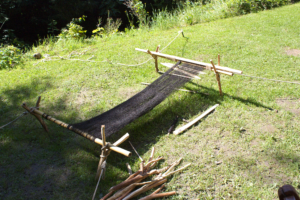
And, as usual, when somebody skilled at this does it, everything looks easy...
What I personally found much, much easier to do was weaving with goat hair on a Sudanese ground loom reconstruction. That was a very coarse weave, and there was only the natural shed, the countershed had to be picked out with a stick each time. With only a few and very thick plied threads per centimetre, though, this was relatively quick and easy to do. I had a stint of weaving on the loom early one morning, and a second bit of weaving on a sunny afternoon, and I really enjoyed the feel of the smooth, warm goat hair yarn on my hands.
I've been wondering about that kind of yarn ever since I read Hald's article about Bedouin spinning and weaving with goat hair for tents, and now finally I've touched it and worked with it. That was definitely one of the many, many "hooray!" moments I had at this Forum.
The special thing about the pharaoh band is that there's extra heddles and extra warps that, when lifted alternatingly with the regular warps, form a pattern in the middle of the band. It's fascinating, and beautiful, and surprisingly difficult to get everything sorted out and aligned and moving like it should and behaving. You need to have the heddles straight so they can glide down or let the other threads glide up, but they can't be really pulled because you want the other shed.

And, as usual, when somebody skilled at this does it, everything looks easy...
What I personally found much, much easier to do was weaving with goat hair on a Sudanese ground loom reconstruction. That was a very coarse weave, and there was only the natural shed, the countershed had to be picked out with a stick each time. With only a few and very thick plied threads per centimetre, though, this was relatively quick and easy to do. I had a stint of weaving on the loom early one morning, and a second bit of weaving on a sunny afternoon, and I really enjoyed the feel of the smooth, warm goat hair yarn on my hands.
I've been wondering about that kind of yarn ever since I read Hald's article about Bedouin spinning and weaving with goat hair for tents, and now finally I've touched it and worked with it. That was definitely one of the many, many "hooray!" moments I had at this Forum.






